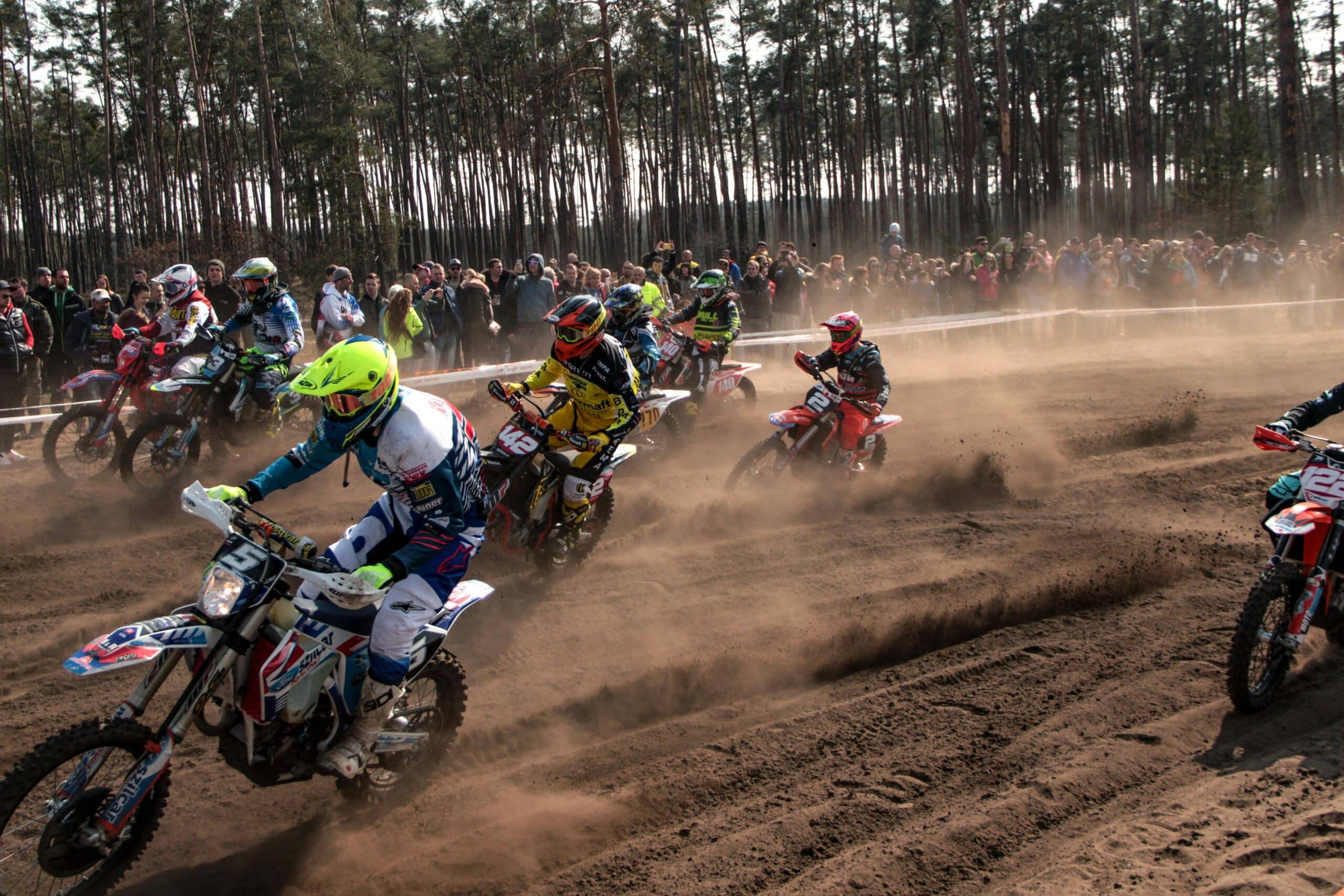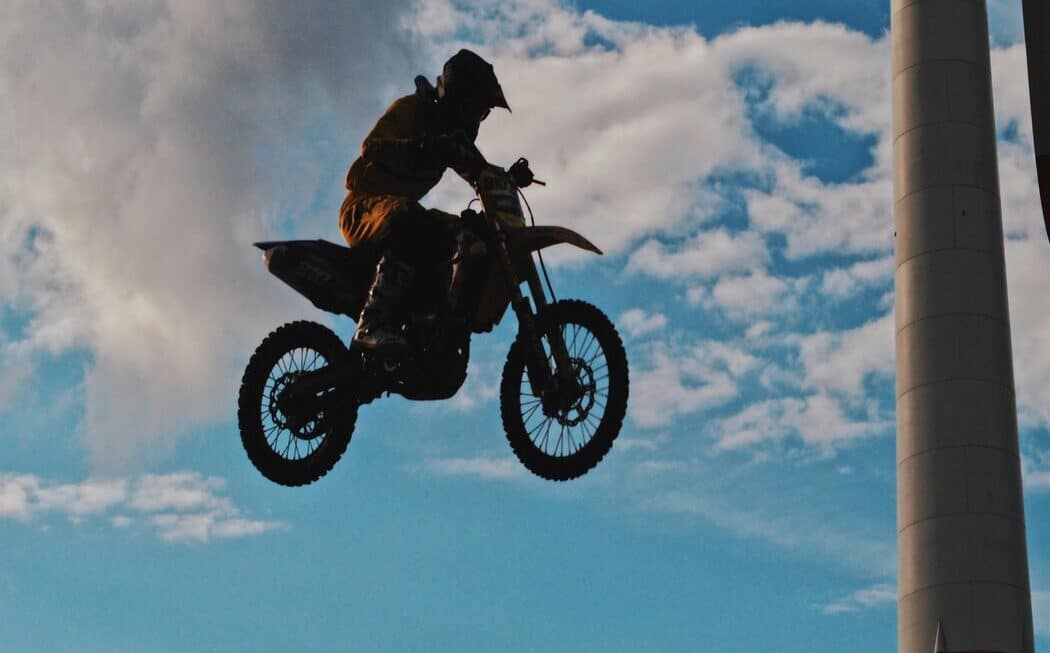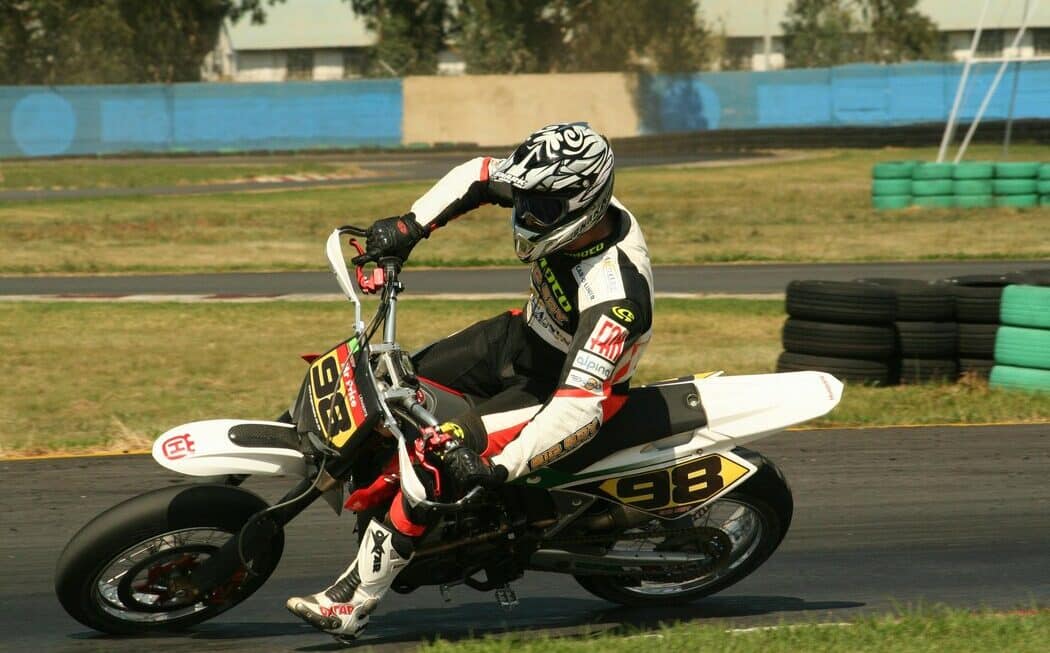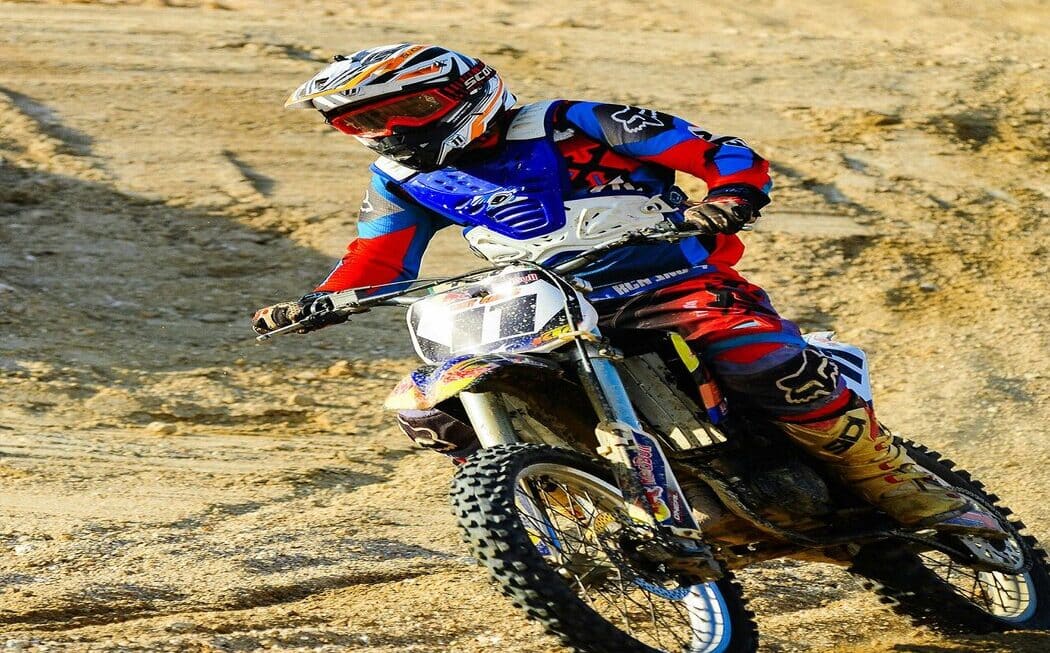Making a dirt bike road legal can be a laborious and time-consuming process, but the reward of being able to take your off-road ride on the open road can make it all worthwhile. Depending on the laws in the area where you live, several steps need to be taken to make your dirt bike compliant with road use regulations. From registering and insuring your machine to outfitting it with necessary accessories, you’ll need to have a good grasp of the proper procedures or enlist an experienced motorcycle mechanic.
How to Make a DIRT Bike Road Legal?
The requirements for riding a dirt bike on the road in each state vary greatly. Before you take your bike out on the roads, it is important to research and understand what is necessary to make it legally compliant. Fortunately, many states have minimum equipment requirements that are easily complied with. Depending on the model of your dirt bike, you will likely need to purchase certain parts to fulfill these requirements and ensure that you are road-legal.
The basics include headlights, tail lights, turn signals, mirrors, and license plates; however, this may vary based on the state you are located in. Additionally, some states will require further installation of accessories such as speedometers or odometer systems for keeping track of mileage. Cyclists must follow all laws regarding their particular state’s regulations to keep themselves safe from any potential liability issues. Taking time to properly install all the parts your area requires is an invaluable investment into having a safe and road-legal ride!
The Law
The law governing what is and is not a street-legal vehicle in the United States is federally mandated to ensure safety for all motorists. The federal statute governs the general requirements for a vehicle to be deemed street legal, as well as addressing certain aspects of on-road motorcycle safety such as brake and turning system specifications. However, it is also highly recommended that one also review state law depending on where they are located since some states have more stringent regulations that they have set up beyond the federal guidelines.
For example, California has recently updated its state laws making it impossible at this time to turn an off-road use-only motorcycle into a street-legal vehicle. To get the full breakdown of what is required for legality, the U.S. government provides “The Federal Minimum Requirement” which addresses many details listed in different sections of U.S Department of Transportation Federal Motor Vehicle Safety Standard (FMVSS) regulations to give an easy overview of all necessary criteria for a vehicle’s legality and safety standards when used on city roads or highways.
Headlight
The headlight is a critical piece of safety equipment on any vehicle. It must be powered correctly and have the ability to switch between low and high beams. The headlights should be DOT (Department of Transmission) approved to meet this requirement; although, it is also worth noting that some areas appear to have variations in how they apply the specific rule regarding low and high-beam switching. To ensure overall safety, having access to a high beam is strongly recommended at all times.
The headlight does not always require a power source, such as a battery. Instead, many vehicles have an attached rear brake which provides the necessary power for operation. When doing so, both the low/high beam switch and its indicator must be easily visible from the rider’s seat position — with the switch itself being readily reachable as well. This allows for easy control over the use of light at various times of day or night, furthering safety through better visibility when required.
Tail Light
The tail light is an essential component in the overall safety of a vehicle. It indicates to drivers behind a vehicle when the driver is slowing down or coming to a stop by activating the brake light function. This alert allows enough time for the vehicles behind to slow down as well and avoid potential accidents. The taillight also serves an important purpose during daytime hours as it can attract the attention of other drivers and help to remind them of their speed.
The taillight also meets four DOT requirements all with one installation. The tail light serves double duty as a brake light and turn signal, saving space in your car. Additionally, they are designed for maximum visibility, even in low lighting conditions, so they do their job more efficiently and effectively. With strong materials and thoroughly tested designs, the tail lights offer protection that ensures you’re following DOT regulations while driving safely during night-time travels or dark setting conditions.
Turn Signals
Using turn signals is a critical part of safe motorcycling practices. In many states, they are required on all motorcycles and must be properly mounted in the front and back to be functional. To ensure compliance, the switch should be placed on the left-hand grip and visible from the rider’s position for easy access without the need to let go of the throttle. Furthermore, the turn signals should be DOT-approved, although sometimes it can be difficult to find an official model outside of conversion packages – meaning that an alternative system that works well is acceptable.
Overall, using turn signals assists with communication with other drivers on the road regarding your intentions as you move around them. This can drastically reduce confusion caused by reckless motorcyclists who choose not to signal and create hazardous entities on busy roads. It is important for proper safety protocols to take precedence over convenience when it comes to signaling turns. After all, there’s no price too high when it comes to putting one’s safety first while on a motorcycle trip!
Horn
The installation of a horn is an essential requirement to make a dirt bike legal for the street. Depending on your location, some states require horns to be electric while others are willing to accept a bicycle squeeze-type horn. Regardless of which type you choose, making sure it’s loud enough for other vehicles and pedestrians to hear is imperative; particularly if you plan on using it in live traffic conditions. Generally speaking, electric horns produce a louder sound and are easier to adjust.
When installing an aftermarket horn, the device must be wired correctly so that it won’t affect any components of the electrical system or interfere with existing wiring or fuses. The best way to ensure this happens is by following detailed instructions given by the manufacturer of the horn. Failing to do this may result in shorts, improper operation, or damage that could lead to costly repairs down the line. That’s why taking your time with wiring and testing out your work makes sense – even though many find this tedious, it often pays off in major ways later on!
Speedometer/Tachometer
Speedometers have been used for a long time to measure how quickly one is traveling on the road. Most states don’t require it but having a speedometer will easily give you the information that matters most when riding your motorcycle, such as how fast and how far you are going. Aftermarket speedometers are highly popular.
Meanwhile, tachometers are not required in any state and many modern bikes leave their factories without having them fitted onto their models. While this little device may seem unnecessary, it can still be useful for informing you when to switch gears and how hard the engine is working compared to its power output capabilities. Therefore depending on what type of riding you do, having a tachometer might be worth considering.
Kickstand
Anyone using their dirt bike in urban areas should consider adding a kickstand if it didn’t already come with one fitted. For off-road use, kickstands are probably best avoided or removed altogether as there will always be resting places available where you want you store your ride safely and securely. But in towns and cities, having this simple contraption attached can provide great peace of mind when you need to take a break or refuel – ensuring your dirt bike is parked safely off the ground until you return!
Anyone using their dirt bike in urban areas should consider adding a kickstand if it didn’t already come with one fitted. For off-road use, kickstands are avoided or removed altogether as there will always be resting places available where you want you store your ride safely and securely. But in towns and cities, having this simple contraption attached can provide great peace of mind when you need to take a break or refuel – ensuring your dirt bike is parked safely off the ground until you return!
Exhaust
The exhaust system of a motorcycle can be one of the most important components to check. It is very important for it to be in good condition, meet sound regulations, and not smoke excessively. For best results, an EPA-approved exhaust should always be used when possible. If that isn’t available, then vetting the muffler or system to make sure it is not too noisy and that it is free from dents and dirt should do the trick. Anything too wild-looking or customized could lead to an inspection failure.
Overall, having a clean and well-maintained exhaust system on any motorcycle is essential for keeping you safe both on the road and during inspections. With subtlety being preferable in some cases, finding a balance between safety and style will ensure your bike passes every test with thriving colors!
Mirrors
Mirrors are a crucial part of any motorcycle. They allow you to maintain awareness of your surroundings, which can help keep you safe while riding. It is important to make sure that any mirrors installed on your motorcycle are functioning properly so that you can keep track of what is going on behind you. In most states, motorcycles must at least have one working mirror installed, but some states require two.
For those who prefer the look of their bikes without mirrors, they will need to invest in a wide-angle mirror that can do away with the blind spot on at least one side of the bike. In this case, classic threaded long-stem mirrors may be useful – many dual sport versions come readily equipped for these types of mirrors. No matter what type or quantity of mirrors you have installed, it is important to make sure they are securely fastened and effective for checking your rear view.
Tires
Tires are a key factor when it comes to safety on any street-going vehicle, especially on motorcycles. To be worthy of the roads and highways, the tires used must meet Department of Transportation (DOT) standards. These are designed to handle highway speeds and provide extra layers of protection for drivers. The tires will bear “DOT” printed somewhere on their sidewall if they have been approved.
Riding with off-road-only tires may save you some money in the short term, but it’s not worth risking your life by skirting around this law. These tires are not suited for highway speeds and have been known to tear apart at high speeds due to a lack of proper construction and materials.
License Plate Bracket
Having a license plate is crucial for anyone looking to legally operate a vehicle on public roads. To properly display the plate, a bracket needs to be installed so that it can be easily seen and read by other drivers or law enforcement. This license plate bracket should adhere to the laws of the state in which it will be operated. Different states have various regulations regarding the size, material, angle, and color of the bracket, so make sure to check with your local Department of Motor Vehicles for any special requirements before purchasing one.
Though it may not seem necessary at first glance, installing an appropriate license plate bracket is an important aspect of owning a new vehicle or bike. The installation should take into account visibility requirements and should not distract from the overall look of the bike. Many higher-quality brackets are made from corrosion-resistant materials that are designed for long-term durability even when dealing with exposure to weather elements like rain and snow. With proper care and maintenance, a reliable license plate bracket can go a long way toward safely displaying your plates on any road trip or commute you take.
Street Gearing
Street gearing is a term used to describe the ratio of teeth between the front and rear sprockets on a motorbike. This ratio determines how much power is transferred from the engine to the wheel. On a dirt bike, this ratio is designed for explosive bursts of speed instead of high sustained speeds that street-legal dual sport machines can reach. Changing the number of teeth on either sprocket can shift this balance one way or another, providing better or worse pickup depending on the situation.
For instance, adding more teeth to the rear sprocket will give you better acceleration at the cost of some top-speed potential. Oppositely, taking a tooth off your bike’s front sprocket can make it get up to higher speeds faster but may limit its overall top speed capabilities. Additionally, keep in mind that changing any gearing ratios – especially about the front sprocket – can potentially mess with your motorbike’s speedometer readout if it has one installed. With careful consideration and proper tuning, you can fine-tune your bike’s gearing for whatever type of ride you might need it for.
Conclusion
How to make a dirt bike road legal? Converting a dirt bike for road use is becoming increasingly difficult. Regulations are tighter, and the requirements and expenses can be daunting. It is essential that anyone who wishes to pursue this project research their state’s laws and regulations thoroughly to understand what changes must be made before the bike can be legally operated on public roads. Owners should also consider carefully whether licensing an off-road bike as a street-legal machine is worth the time and expense required to comply with local or federal regulations.



